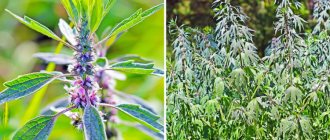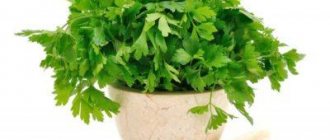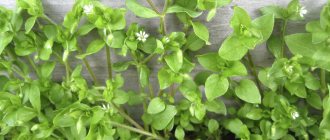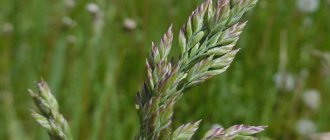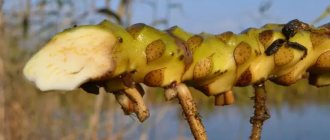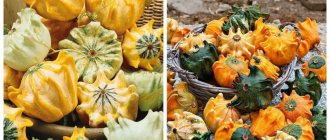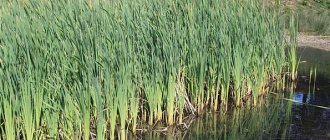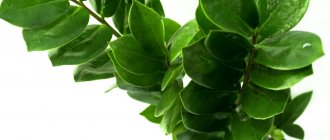Types of perennial
The brown plush heads of the plant are visible from afar. They attract attention with their unusualness and beauty. The first description of cattail is found in the works of the ancient Greek naturalist Dioscorides, who gave it the name “Turk” .
It is called stick insect, devil's grass and barrel grass. The latter name is due to the fact that coopers used its leaves in the manufacture of barrels.
Not everyone knows where cattail grows and in what zone. The best conditions for it are in temperate and tropical climates. There are about thirty species of this plant. The most common:
- broadleaf;
- narrow-leaved;
- small;
- Caspian;
- ivory;
- Dominican;
- Oriental.
Cattails in Russia
In our country, the most common are narrow-leaved and broad-leaved cattails.
Favorable places for its growth are the shores of shallow bodies of standing water, such as swamps, ditches, roadsides, puddles and lake shores. It also thrives in polluted waters. It, like sedge and reeds, perfectly purifies water, destroying dangerous substances.
The thickness of the broadleaf cattail root is 2−3 cm and the length is 50−60 cm. Every year the rhizome produces new shoots. The thick stem grows up to two meters. Inside the long, hard leaves are tubes through which air flows to the flooded parts. The leaves reach three meters in length and their width is approximately 2 cm.
A distinctive feature of the cattail plant is its cylindrical inflorescence (cob) of dark brown color. It contains female (pistillate) flowers. And on the pointed process there are male (staminate) flowers.
Broadleaf cattail blooms in June and early July. The wind carries pollen from male flowers to female flowers. Pollination occurs, after which the male flowers dry up.
August is the time of fruit ripening. The surface of the cob, which contains the fruits (seeds), is velvety and elastic to the touch. But if you open it, you can see white fluff inside.
In late autumn, the leaves and stems dry out. And the fruits remain on the cob, as before. At the beginning of spring, they crumble and are carried by wind and water.
Once in the water, the fruits float until they are completely wet. They then drown to germinate and give birth to new plants. The root system forms very extensive thickets in the reservoir.
Narrow-leaved and broad-leaved cattails are very similar. The difference between narrow-leaved is the small width of the leaf (1 cm) and the small size of the plant itself. Its cobs are much thinner and look like pencils. But what’s interesting is that the rhizome of the narrow-leaved cattail is massive and thick.
Small cattails are grown for decorative purposes. Elegant, thin-leaved, with small ears, it looks good in small artificial reservoirs. You can easily grow it yourself in a special container or in a regular trough.
Growing and storing plants
You can grow cattails only if you have marshy sandy soil, preferably on the shore of a reservoir. The plant is planted with cuttings that have at least one bud, to a depth of 30-50 cm. It is best to fence off a small area for it, as it grows very quickly. The plant does not need watering, fertilizing or weeding; the main thing is to collect it in time before frost, so as not to lose the entire harvest.
So, mature ears need to be removed before the first frost, roots a little earlier - immediately after the end of the growing season. The shoots on which there will be flowers are cut off around May, and the flowers and leaves themselves - in June.
All parts are dried at high temperatures in the shade, placed in bags, jars or bags, and stored in a cool, dry place for up to 2 years.
Do you use cattail? Why and how often? What did the treatment give you? Tell us everything in the comments.
Use in food
The roots of the plant contain starch, protein, fat, sugar, fiber, minerals and vitamins. It can become a tasty and healthy food for vitamin deficiency, fatigue, and low hemoglobin levels. Food prepared from it is indispensable during a long hike.
The leaves (at the base of the stem) of young cattail taste like a cucumber. You can make salads and soups from them. The roots, charcoal-roasted or boiled, resemble potatoes. They can be made into flour and used to make flatbreads.
From crushed roasted roots you can make a drink similar to coffee . Boiled young shoots taste like asparagus. They are also used in pickled form.
Harm from cattail.
the roots in food with caution for people suffering from constipation and excess weight .
Otherwise - only personal intolerance , for example, an allergy to fluff - pollen. Therefore, only personal experience. Try it a little and if your health does not worsen, then consume it.
The main danger is to confuse it with another cattail-like plant , in which case it is possible to get poisoned.
Before the typical cattail seed heads are visible, it can be confused with the iris. Irises grow in the same areas, but are toxic and therefore not edible. The main difference between cattail and iris is determined by the stem; here the leaves grow around a round stem at its base. Iris leaves grow around a flat stem at the base. By the way, there is a parable about irises and cattails.
To prevent you from getting confused in the plants, see the picture below. It shows characteristic differences, for example, cattails and reeds (if you don’t see something, zoom in).
Tags: vitamin deficiency, tonsillitis, anemia, vitamin C, dermatitis, dysentery, colitis, hemostatic, diuretic, periodontal disease, fatigue, wound healing, wounds, cattails, type 2 diabetes mellitus, weakness, stomatitis, scurvy
- Related Posts
- Why cattails cannot be kept at home.
- Turnip - beneficial properties.
- Natural burdock oil
« Previous entry
Healing properties
The leaves, roots, cobs and flowers of this plant are used in folk medicine. Leaves should be harvested in June and July, and roots in August and September. The cobs must be collected before frost sets in.
During a hiking trip or fishing, crushed leaves are indispensable as a hemostatic and healing agent for fresh wounds, from which no one is safe in camping conditions.
A decoction prepared from the leaves normalizes the glucose level in the blood.
Medicines made from it are excellent for many diseases:
- flowers and cobs are used for intestinal, gastric and hemorrhoidal bleeding, as well as for urethritis, cystitis and gynecological diseases;
- frostbitten and burned areas of the body are smeared with melted butter mixed with cob fluff;
- for dysentery, an infusion of leaves is used as an astringent;
- bleeding wounds are sprinkled with powder made from inflorescences.
The only contraindication to treatment with cattail medications can be individual intolerance.
Other interesting facts
- The plant is a good source of biomass. So in the future it can be used as a fuel source.
- You can stuff pillows with fruit hairs. They have good thermal insulation and buoyancy properties.
- The female flowers are used to make tinder, which is ignited with a spark from a flint.
- The stems and leaves are also used in different ways. They make good straw, make paper, and weave them into rugs, chairs, and hats.
- The pollen is highly flammable and is used to make fireworks.
- One inflorescence can produce from 20,000 to 700,000 small single-seeded fruits.
Application for construction and economic purposes
Since ancient times, people have appreciated not only the nutritional and medicinal value of cattail. It was widely used in the household, in the manufacture of matting, shoes, bags, and rugs. Cob fluff was used to stuff mattresses, pillows, furniture and even life jackets. Cobs soaked in oil successfully replaced torches.
Nowadays it is not forgotten and is also successfully used.
- The dry plant replaces fuel in areas where there is little forest.
- The leaves and stems are used to make baskets, hats, wicker furniture and all kinds of crafts.
- It is used to make paper, packaging material, and canes.
- The stems are used as building material.
Many people use it to decorate their homes, making wonderful bouquets from it. Of course, they don’t last long indoors, since the cob crumbles as it ripens.
Description of reeds
This resident of river banks belongs to the sedge family; among its representatives there are both annuals and perennials (Figure 3).
Based on the description of the species, the features of the reed are as follows:
- There are different types - we have forest, lake and rooting.
- Like reed, it is a cereal and has inconspicuous flowers; it reproduces vegetatively with the help of seeds carried by the wind and its powerful rhizomes.
- Lake and forest subspecies can be found not only near rivers and lakes, but also in flooded meadows and swamps.
Let's figure out how to distinguish reeds from cattails, according to their description. The fruits of the first are small panicles, while those of the second are prickly and have an irregular corymbose shape. Reed stems are bare, with an inflorescence-fruit at the top, and the leaves grow from under the water, almost separately from the stem itself. It does not exceed 2.5 m in height and is easily recognized by the lush green panicles on the tops of the shoots that appear in June.
Figure 3. Appearance of ordinary reeds
The rooting subspecies is remarkable in that, in addition to paniculate inflorescences, it has long stems creeping along the surface of moist soil, which then send roots into it and form a new plant.
